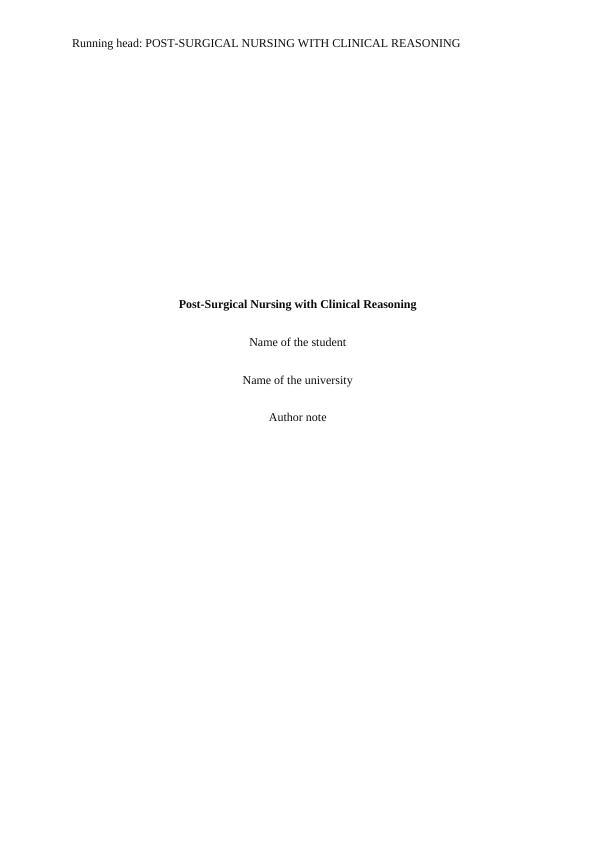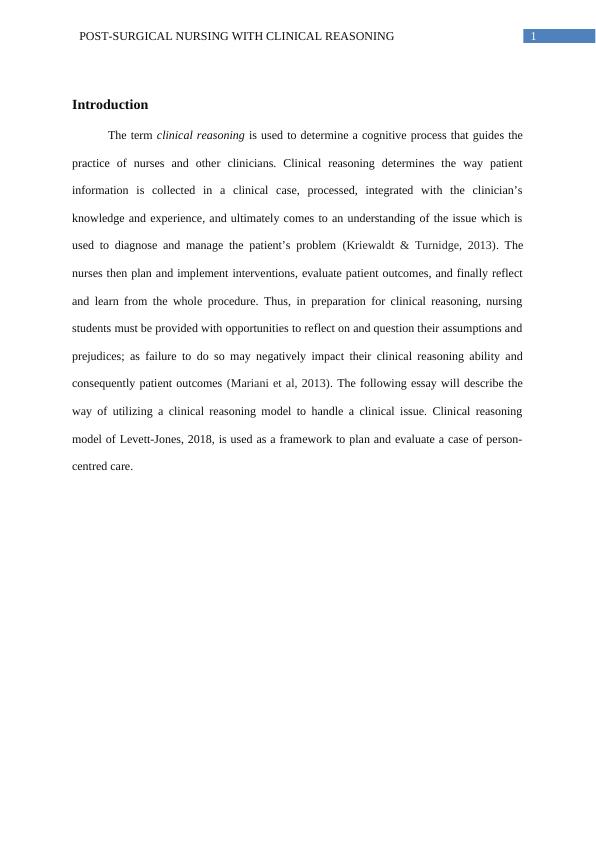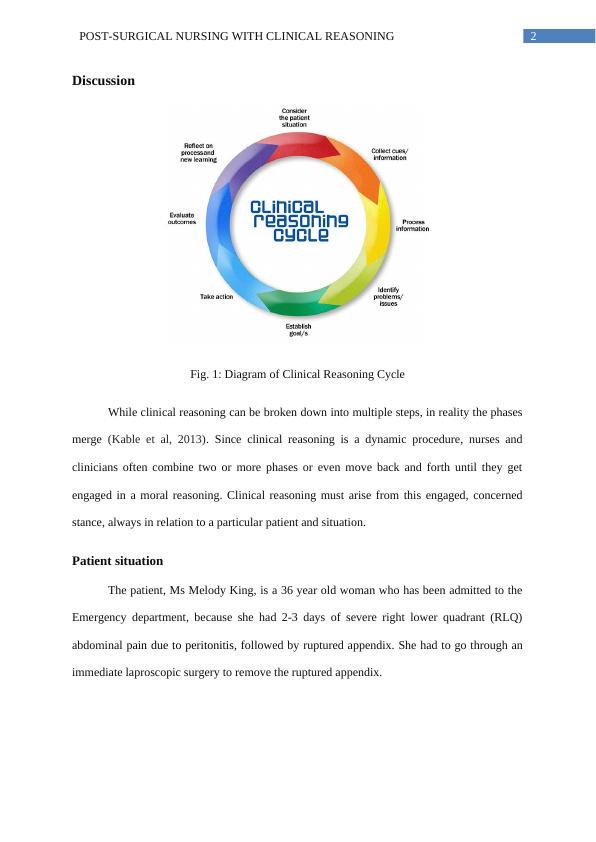Post-Surgical Nursing with Clinical Reasoning
Added on 2023-06-09
10 Pages2447 Words360 Views
End of preview
Want to access all the pages? Upload your documents or become a member.
Clinical Integration Specialty Practice - NRSG370 | Case Study
|11
|2827
|507
Clinical Integration Specialty Practice
|7
|2365
|273
Care for a Peritonitis Patient
|10
|2736
|223
NRSG370 - Case Study on Clinical Integration
|12
|2386
|32
Clinical Integration
|9
|2518
|306
Clinical Integration Assignment
|10
|2459
|325



